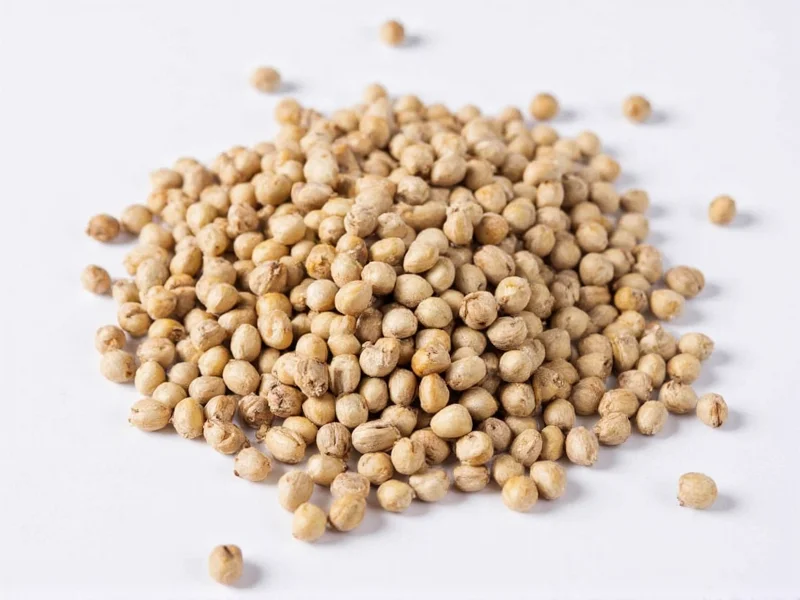Understanding what white pepper is made from begins with recognizing its botanical origin. Both white and black pepper come from Piper nigrum, a flowering vine native to South India that's now cultivated throughout tropical regions. The transformation from berry to spice involves specific processing techniques that dramatically alter the final product's appearance, flavor, and culinary applications.
The White Pepper Production Process
White pepper production follows a precise sequence that distinguishes it from black pepper:
- Ripening: Unlike black pepper which uses unripe green berries, white pepper requires fully ripe red berries
- Fermentation: The harvested berries are submerged in water for 7-14 days, allowing natural enzymes to break down the outer layer
- Removal of outer layer: After fermentation, the softened outer skin is rubbed off, leaving the pale inner seed
- Drying: The cleaned seeds are spread out to dry in the sun until they become the familiar pale beige to light yellow peppercorns
- Sorting and packaging: The dried peppercorns are sorted by size and quality before distribution
| Characteristic | White Pepper | Black Pepper |
|---|---|---|
| Berry ripeness | Fully ripe (red) | Unripe (green) |
| Processing method | Fermentation and skin removal | Sun-dried with outer layer intact |
| Flavor profile | Milder, earthier, less complex | Sharper, more complex, floral notes |
| Heat level | Moderate (2,500-3,000 SHU) | Higher (3,000-4,000 SHU) |
| Common culinary uses | Light-colored sauces, mashed potatoes, Chinese cuisine | General seasoning, dark sauces, most Western dishes |
Historical Context of White Pepper
White pepper has been used for centuries, particularly in European and Asian cuisines where its subtle flavor and lack of visible specks made it preferable in light-colored dishes. During medieval times, white pepper was often considered more valuable than black pepper due to the additional labor required in its production. In traditional Chinese medicine, white pepper has been used for digestive issues and to improve circulation.
Culinary Applications and Flavor Profile
White pepper's unique production process creates a spice with distinct culinary properties. Without the outer layer containing most of pepper's essential oils, white pepper delivers a more straightforward heat with earthy, slightly fermented notes. Chefs often choose white pepper when they want pepper flavor without the visual distraction of black specks—making it ideal for:
- Cream sauces and soups
- Mashed potatoes and light-colored purees
- Seafood dishes
- Traditional Chinese and Vietnamese cuisine
- Some types of sausages and processed meats
When substituting white pepper for black in recipes, use about 25% less as its flavor can become overpowering if used in equal amounts. The fermentation process gives white pepper a slightly musty quality that some describe as "barnyard" notes—this is normal and indicates proper processing.
Common Misconceptions About White Pepper
Several myths persist about white pepper that deserve clarification:
- Myth: White pepper comes from a different plant than black pepper
- Fact: Both come exclusively from Piper nigrum; the difference is purely in processing
- Myth: White pepper is milder because it's "less spicy"
- Fact: The heat compounds are concentrated in the inner seed, but white pepper lacks the complex flavor notes of black pepper's outer layer
- Myth: All white pepper tastes the same regardless of origin
- Fact: Like wine, white pepper flavor varies by region—Vietnamese white pepper tends to be floral, while Indonesian versions are more earthy
Storage and Quality Considerations
To maintain white pepper's delicate flavor profile, proper storage is essential. Whole peppercorns retain freshness significantly longer than pre-ground versions. Store in an airtight container away from light and moisture. Properly stored, whole white peppercorns maintain optimal flavor for 2-3 years, while ground white pepper begins losing potency after 6 months.
When selecting white pepper, look for uniform pale beige color without dark spots (which indicate incomplete skin removal). High-quality white pepper should have a clean, slightly floral aroma without mustiness beyond the natural fermentation notes. Avoid products with visible mold or inconsistent coloring, as these indicate poor processing or storage.











 浙公网安备
33010002000092号
浙公网安备
33010002000092号 浙B2-20120091-4
浙B2-20120091-4